| |
The Antiviral Efficacy of the Nonnucleoside HCV Polymerase Inhibitor A-848837 in the HCV Infected Chimpanzee
|
| |
| |
Reported by Jules Levin
14th International Symposium on Hepatitis C Virus & Related Viruses, Glasgow, UK, 9-13 September 2007
Warren Kati, Rolf Wagner, Liangjun Lu, Yupeng He, Chih-
Ming Chen, Gennadiy Koev, Sherie Masse, Yan Cai, Cheri
Klein, David Beno, Lisa Hernandez, Preethi Krishnan, Ron
Pithawalla, Tami Pilot-Matias, Tim Middleton, Robert Lanford,
Dale Kempf and Akhter Molla
Abbott Laboratories, Abbott Park, IL
Southwest Foundation for Biomedical Research, San Antonio, TX
AUTHOR SUMMARY
The HCV-infected chimpanzee is a valuable animal model for investigating antiviral efficacy and PK/PD relationships
An "in vivo" EC50 = 0.38 _M in chimpanzee was estimated from the escalating-dose study and the inhibition of viral kinetics.
-- Correlates with the in vitro replicon EC50 = 0.40 _M (40% chimp serum)
-- Low levels of A-848837 did not select for resistance mutants
-- Resistant mutants observed in vivo were also observed during in
vitro studies
Properties of A-848837
Kati, et al., 13th Int'l HCV Mtg, #427
- Polymerase IC50 (1a &1b) = 0.3 to 0.6 nM
- Replicon EC50 = 2 nM (1b) to 4 nM (1a)
16-fold loss in 40% human serum
- Orally bioavailable in rats, dogs and monkeys and achieves high concentrations in the liver
Next step: Study the antiviral efficacy of A-848837 in an HCV infected chimpanzee
Objectives for Evaluation of A-848837 in the Chimp
Efficacy/Resistance - Identify the lowest effective dose of A-848837 in the HCV infected chimpanzee model
-- Viral load reduction
-- Appearance of resistance
PK/PD - Define the pharmacokinetic/pharmacodynamic (PK/PD) relationship in the chimpanzee
Estimate an in vivo EC50
Escalating Dose Protocol for the Experiment

Blood draw 12 hrs after last dose in each period to measure viral load and drug concentration
Test subject: Male chimpanzee, infected with genotype 1a for 20 yrs.
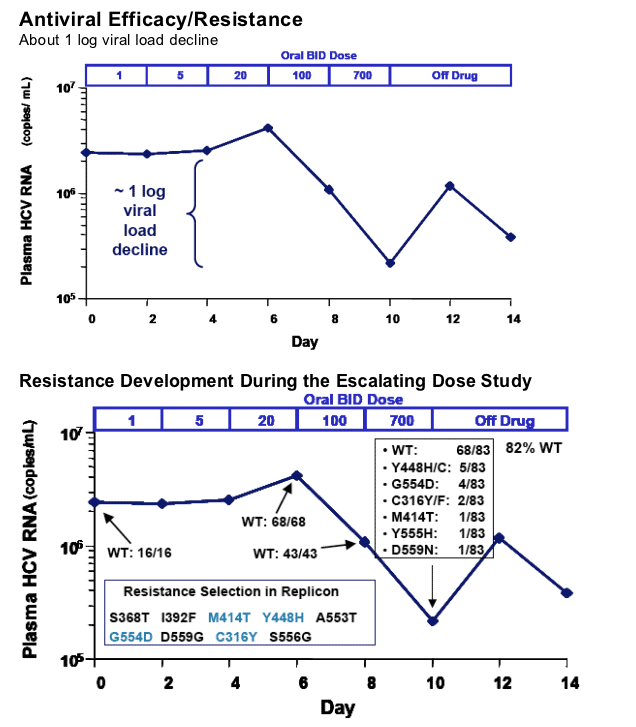
Resistance did not appear until after viral loads had declined.
Resistant mutants observed in vivo were also observed during in vitro expts.
Pharmacokinetics/Pharmacodynamics (PK/PD)
Estimating an "in vivo" EC50
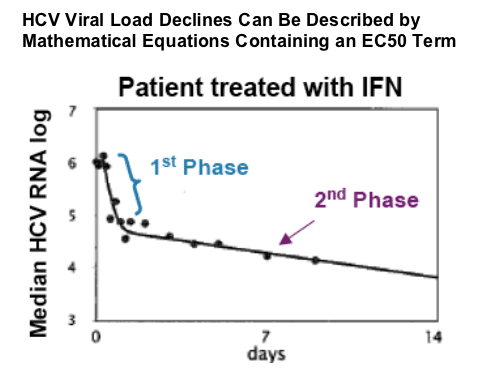
Neumann, et al., Science
282, 103-107, 1998
Viral load declines over 14 days in response to antiviral therapy can be described as the sum of two exponential functions.
Math is complex, but the only term that is important for drug therapy is "_" .
_ = antiviral efficacy = % inhibition
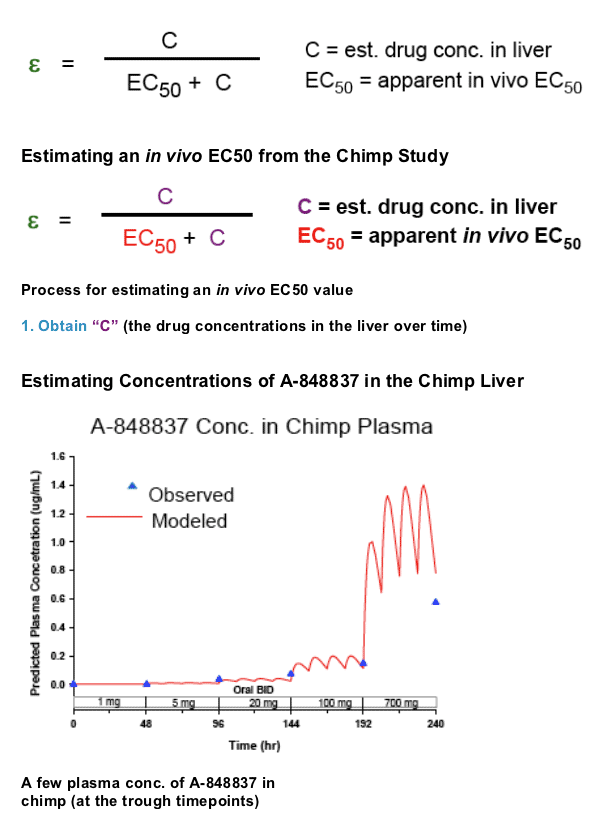
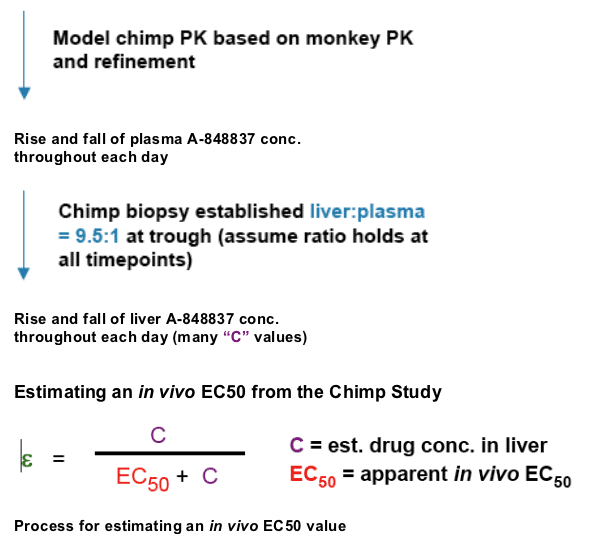
1. Obtain "C" (the drug concentrations in the liver over time)
2. Using computer simulation:
-- input test EC50 values which generates _ values
-- _ values become part of the Neumann et al., two- exponential equation that predicts viral load declines over time
-- repeat the process until an EC50 is found that is consistent with
the dose-dependent viral load declines
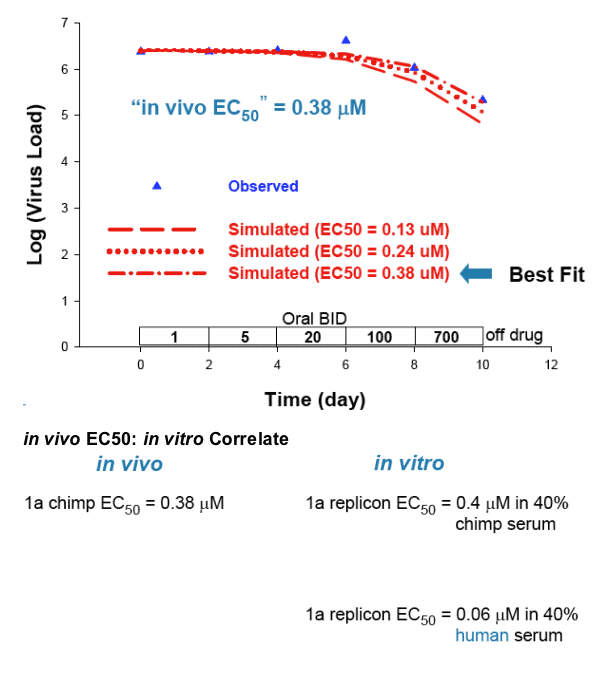
|
|
| |
| |
|
|
|